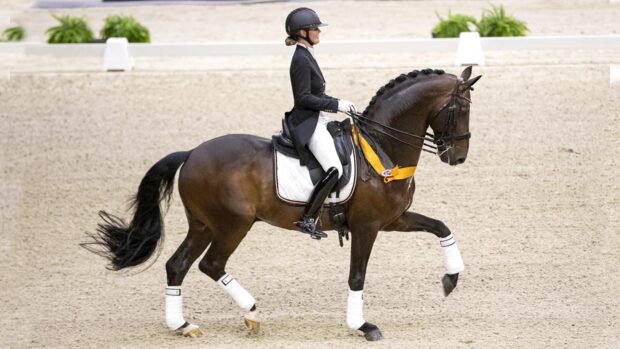What happens at the grading?
The stallion must show talent for dressage or show jumping on the day, then prove himself in competition. The day involves a trot-up, loose jumping for 2½- to three-year-olds (1m-1.10m) or jumping under saddle for four-year-olds and up (a short course of approx 1.10m, rising with each age group). Dressage stallions perform a short test showing the level of schooling or competition.
How are the marks distributed and what qualities are looked for?
The judges make comments and write notes, but do not give marks — they discuss among themselves which horses should grade and at what level. No sheets are given out — the stallion owner should ask the judges if they have any queries.
A stallion is judged on ability, conformation,pedigree and evidence of qualities he will pass on.
How many judges grade the stallions?
Three — usually two show jumping and one dressage.
Which horses are eligible?
Any breed, although the majority are sport horses — warmblood and Thoroughbred. The minimum age is 2½.
Do stallions need a prior veterinary examination?
Each must pass a five-stage vetting. Scopes or X-rays can be requested by the society after the grading.
How many stallions come forward and what percentage is successful?
Around 50 to 55 attend UK gradings twice a year. On average, about 22 grade.
What are the different grading levels?
Registered, licensed, approved and approved elite.
What is your assessment of the standard of presentation? How should people prepare?
The standard is good. People should ensure their horse leads out nicely and does a good trot-up. They will also need to practice loose jumping to a good height and spread.
Are there turn-out rules?
Smart attire is encouraged and some handlers wear white, as they do in Holland. Horses wear normal tack and can have front boots only. Riders should wear normal show gear.
What is the entry fee and is any documentation required on the day?
A copy of the stallion’s pedigree, along with a vetting certificate, should be sent with the entry, plus any competition results. The horse’s passport showing the original five-stage vetting should be handed to the secretary on the day.
Entry fee is £141. If the stallion grades, registration fee is £275, which includes passport overstamping and compulsory DNA testing.
After grading, does the stallion have to be reinspected?
A stallion can be asked to reattend a grading at any time. It can also be upgraded due to its performance record.
Dates and venues of 2007 gradings
No dates yet, usually held in April and November. Contact: (tel: 01444 484840) www.angloeuropeanstudbook.info



